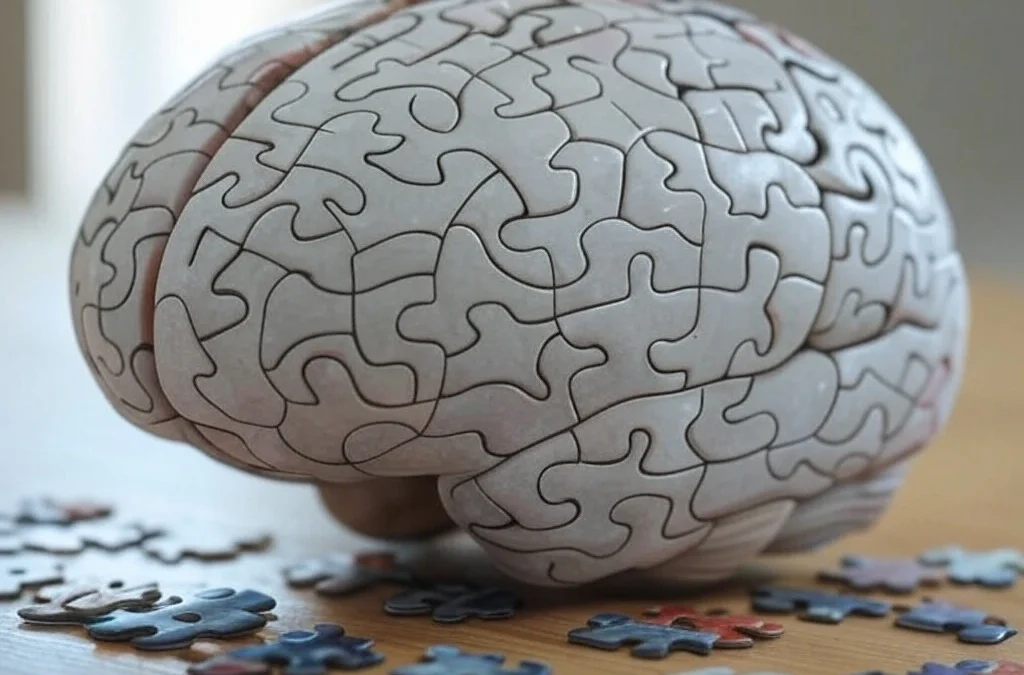Social problems are all around us, affecting communities both big and small. From poverty and unemployment to discrimination and pollution, these issues create barriers that make life harder for many people. Understanding social problems is the first step toward finding solutions and creating positive change. Often, these problems are interconnected. For example, improving access to education can lead to better job opportunities, which in turn can reduce poverty.
In this article, we will explore 40 key examples of social problems. Each one explained in simple and practical terms, helping you understand how they affect people’s everyday lives. By the end, you’ll have a clearer understanding of the social issues that demand attention and why it’s important to get involved. Whether you’re a student, a professional, or simply someone looking to learn more, this guide will give you a solid understanding of the challenges that communities face today – and how we can work together to address them.
What Are Social Problems?
Social problems are challenges that harm many people in a community and are seen as conditions that need to be fixed. These problems come from a mix of economic, political, environmental, and cultural factors. They often show deeper inequalities and struggles within society. Examples include poverty, unemployment, discrimination, crime, and lack of access to education or healthcare. Solving social problems requires governments, communities, and organizations to work together to create policies and programs that make society fairer for everyone. Addressing these issues is key to improving life for all and ensuring a stable, healthy community.
Key Examples of Social Problems
Below is a list of 40 important social problems, together with explanations to help you understand what they are and how they impact our society.
1. Poverty
Poverty means not having enough money to meet basic needs like food, housing, and healthcare. People living in poverty often struggle to access education and job opportunities, making it hard to break the cycle. In many parts of the world, poverty passes from generation to generation, with children growing up in disadvantaged conditions, making it even more challenging to escape poverty later in life. According to the World Bank, around 9% of the global population lives in extreme poverty, earning less than $2 a day. Addressing poverty requires social programs, fair wages, and improved access to education and healthcare.
2. Homelessness
Homelessness happens when people do not have a stable place to live. This might be due to losing a job, mental health struggles, or simply the inability to afford rent in increasingly expensive cities. Homeless people face many daily challenges: staying safe, finding food, and getting healthcare. In some places, there aren’t enough shelters or housing options to help those in need. Without a home, it’s also difficult to find a job or maintain a steady routine. Solutions include affordable housing programs and mental health support to help people get back on their feet.
3. Unemployment
Unemployment is when people who are ready and willing to work cannot find a job. This can lead to financial stress, depression, and even homelessness. Unemployment doesn’t just affect individuals – it harms entire communities and economies by reducing the amount of money people can spend. High unemployment rates can also increase crime rates, as people may turn to illegal activities for survival. Solutions to unemployment include job training programs, support for small businesses, and economic policies that create more job opportunities.
4. Discrimination
Discrimination happens when people are treated unfairly because of their race, gender, age, religion, or political beliefs. It can happen in the workplace, at school, or even within communities. Discrimination limits people’s opportunities and can harm their mental health, leading to feelings of exclusion and resentment. For example, a qualified person may be passed over for a job just because of their background or identity. Combating discrimination requires promoting diversity, enforcing anti-discrimination laws, and encouraging inclusion.
5. Racism
Racism is a form of discrimination based on a person’s race or ethnicity. It can show up in different ways, such as racial slurs, exclusion from social or professional opportunities, or systemic bias within institutions like schools and the justice system. Racism hurts not only those directly affected but society as a whole by perpetuating inequality and division. To fight racism, society must encourage tolerance, teach history honestly, and create fair policies that ensure equal treatment for all races.
6. Political Polarization
Political polarization occurs when society becomes divided into extreme political camps, making it difficult to compromise or find common solutions. This deep division creates a “them vs. us” mentality, which can lead to social tension, gridlock in governments, and even violence. People start to distrust those with different views, and public debate becomes more about attacking others than solving problems. Encouraging open dialogue, respectful conversations, and finding common ground can help ease political polarization.
7. Violence and Crime
Violence and crime can shatter communities, making people feel unsafe in their own neighborhoods. High crime rates are often linked to poverty, lack of education, and social inequality. When people don’t have access to opportunities, some may turn to crime as a means of survival. Crime also creates a cycle of fear, making it harder for communities to thrive. Addressing the root causes of violence – like poverty and inequality – while investing in education and rehabilitation programs can help reduce crime.
8. Fake News
Fake news refers to false or misleading information spread online or through the media, which is often presented as fact. It can cause confusion, fuel distrust, and lead to dangerous misunderstandings, especially in times of crisis. For example, during elections, fake news about candidates’ policies or backgrounds can influence voters and undermine the democratic process. To fight fake news, people need to learn how to verify information.
9. Healthcare Accessibility
In many places, healthcare is expensive or hard to reach, especially in rural or underserved communities. People without access to healthcare may let treatable illnesses worsen, leading to severe health problems or even death. Barriers include high costs, lack of insurance, or the distance to the nearest doctor or hospital. Improving healthcare access can involve expanding insurance coverage, lowering the cost of medicine and treatments, and building more healthcare facilities in remote areas.
10. Monopolies by Big Corporations
When large companies gain too much control over a market, they can create monopolies, limiting choices for consumers and stifling competition. This often leads to higher prices and fewer innovations. Small businesses struggle to survive when faced with such powerful competitors, which can hurt local economies. For example, a few pharmaceutical companies control the market for certain life-saving drugs, driving up prices and limiting affordable options for patients. Encouraging fair competition and enforcing antitrust laws can prevent monopolies from harming the economy.
11. Substance Abuse
Substance abuse involves the misuse of drugs or alcohol, which can lead to addiction, health problems, and strained relationships. This issue affects not just the individuals involved but also their families and communities. For example, the opioid crisis has devastated many regions, leading to overdoses and deaths. People struggling with addiction often need rehabilitation and support to recover. Solutions include better access to treatment, mental health care, and community support systems.
12. Mental Health Stigma
Mental health stigma is the negative attitude toward people who suffer from mental health issues. This stigma often discourages individuals from seeking help, leading them to feel isolated or ashamed. Many people still view mental illness as a weakness rather than a medical condition that can be treated. Raising awareness, normalizing conversations about mental health, and providing accessible treatment options are key to reducing this stigma. Society must recognize that mental health is just as important as physical health.
13. Child Labor
Child labor refers to children being forced or compelled to work in dangerous conditions that negatively affect their health, education, and development. It is most common in developing countries where poverty drives families to send their children to work instead of school. Many children work long hours in harsh environments, such as factories or farms, with little pay. In some regions, child labor laws exist but are poorly enforced. To combat child labor, it’s crucial to strengthen laws and ensure children have access to education and safe living conditions. In 2020, the International Labour Organization estimated that about 160 million children were involved in child labor globally, making it a critical issue to address.
14. Human Trafficking
Human trafficking is a form of modern-day slavery where people are coerced, deceived, or forced into labor or sexual exploitation. It affects millions of men, women, and children worldwide. Trafficking often targets vulnerable populations, including those in poverty or conflict zones. Victims are often promised legitimate work but are instead exploited and trapped, with no way to escape. Traffickers control their victims through threats, violence, or manipulation. The fight against human trafficking requires stricter laws, international cooperation, and rehabilitation programs for survivors. Raising awareness also plays a big role in identifying and preventing trafficking.
15. Aging Population
As birth rates fall and life expectancy increases, many countries are seeing a growing aging population. While living longer is a positive achievement, it presents challenges, such as increased healthcare costs and a shrinking workforce. Countries must find ways to support older adults without overburdening the younger working population. This can mean reforms in healthcare, pension systems, and retirement policies. For example, Japan, where more than 28% of the population is over 65, faces significant economic pressure from its aging society. Preparing for this demographic shift is critical to maintaining economic stability and ensuring that elderly people can live with dignity.
16. Urbanization
Urbanization refers to the rapid movement of people from rural areas to cities in search of better jobs and living conditions. While cities offer more opportunities, rapid urbanization can lead to overcrowding, insufficient infrastructure, and pollution. Without proper planning, cities may struggle to provide essential services like clean water, sanitation, and public transportation. Large urban populations can also become more vulnerable to crises like epidemics or cyberattacks due to their high density and reliance on digital systems. Sustainable urban planning that includes housing, green spaces, and efficient public services is necessary to prevent the negative impacts of urbanization.
17. Digital Divide
The digital divide describes the gap between people who have access to modern technology and the internet and those who do not. In today’s world, access to technology is critical for education, job opportunities, and staying informed. People without internet access – often in rural areas or low-income communities – are at a significant disadvantage. Bridging the digital divide involves providing affordable internet access and digital literacy training for everyone, ensuring no one is left behind in the digital age.
18. Food Insecurity
Food insecurity means that individuals or families do not have reliable access to sufficient, safe, and nutritious food. It’s not just about hunger – it’s about not knowing where the next meal will come from. This problem affects millions of people worldwide and can lead to malnutrition, stunted growth in children, and long-term health issues. Causes of food insecurity include poverty, conflict, and natural disasters. In some countries, like Yemen, ongoing war has made it nearly impossible for families to access food, creating severe humanitarian crises. Solutions include improving food distribution systems, supporting local agriculture, and offering social safety nets.
19. Corruption
Corruption happens when people in power, such as government officials or business leaders, use their positions for personal gain rather than for the public good. This can include bribery, embezzlement, or favoritism in awarding contracts. Corruption harms societies by diverting resources from public services, like education and healthcare, and weakening trust in institutions. In countries with high levels of corruption, economic growth is often slowed, and inequality deepens. For example, in 2021, Transparency International ranked Somalia and South Sudan as the most corrupt countries. To fight corruption, strong legal frameworks, transparency, and public accountability are essential.
20. Declining Population
A declining population occurs when a country’s birth rates drop below its death rates. This results in fewer young people and a growing elderly population. Countries like Italy and Japan are facing this issue, leading to a shrinking workforce and fewer people to support the economy. A declining population can strain social services, like pensions and healthcare, because fewer working-age people are supporting a growing number of retirees. Solutions might include encouraging higher birth rates, attracting immigrants, and adapting policies to care for an aging population while maintaining economic productivity.
21. World Pollution
Pollution is one of the biggest threats to the environment and human health. It affects the air, water, and soil, which we all depend on. Industrial activity, transportation, waste disposal, and chemical use are major causes of pollution. Air pollution alone kills about 7 million people every year, according to the World Health Organization. Plastic pollution in the oceans harms marine life and disrupts ecosystems. Tackling pollution requires coordinated efforts, such as reducing emissions, improving waste management, and promoting cleaner energy sources.
22. Income Inequality
Income inequality refers to the unequal distribution of wealth and income within a society. When wealth is concentrated in the hands of a few, it limits the opportunities for others to improve their lives. This gap between the rich and the poor can lead to social unrest, as those with fewer resources struggle to access education, healthcare, and housing. In the U.S., the richest 1% control more wealth than the nation’s entire middle class, illustrating the extent of this problem. Solutions include fair wages, progressive taxation, and policies that provide equal opportunities for all citizens.
23. Housing Affordability
The high cost of housing is a growing problem in many parts of the world, especially in large cities. As property prices rise, many people find it difficult to afford rent or buy homes, leading to overcrowded living conditions or even homelessness. Housing affordability affects not just low-income families but also middle-income earners in expensive housing markets. In cities like San Francisco and London, average rent prices far exceed what many workers can afford. Addressing this issue requires building more affordable homes, offering financial assistance, and implementing rent control measures.
24. Child Abuse
Child abuse involves any form of physical, emotional, or sexual harm inflicted on a child. It can happen within families, schools, or other institutions meant to protect children. Child abuse can have lifelong consequences, including mental health issues, low self-esteem, and difficulties forming relationships. It is a hidden problem, as many cases go unreported. Protecting children from abuse requires public awareness, strong legal protections, and support systems that ensure children’s safety and well-being.
25. Domestic Violence
Domestic violence occurs when someone uses physical, emotional, or psychological harm to control or intimidate a partner. It can happen in any relationship, regardless of gender or age, and often goes unreported because victims fear retaliation or are emotionally manipulated into staying silent. The effects of domestic violence can be devastating, leading to long-term trauma and even death. Solutions include stronger legal protections, emergency shelters, and support services for survivors to help them rebuild their lives.
26. Lack of Clean Water
Access to clean and safe drinking water is a basic human right, yet millions of people worldwide still lack this essential resource. Contaminated water can lead to diseases like cholera and diarrhea, which kill thousands of children each year, especially in developing countries. In places like sub-Saharan Africa, women and children often spend hours walking to collect water, limiting their ability to work or attend school. Solving the water crisis involves investing in infrastructure, like wells and filtration systems, and promoting water conservation to ensure that everyone has access to this vital resource.
27. Refugee Crisis
The refugee crisis arises when large groups of people are forced to flee their homes due to war, persecution, or environmental disasters. Refugees often leave everything behind and find themselves in foreign lands with no shelter, no jobs, and often, no safety. Many face long, dangerous journeys only to end up in overcrowded refugee camps or hostile environments. According to the UN, there are currently over 26 million refugees worldwide. Addressing this crisis involves humanitarian aid, legal protections for refugees, and international cooperation to help these individuals rebuild their lives in safety.
28. Bullying
Bullying is intentional, harmful behavior aimed at intimidating or humiliating others. It can occur in many forms: physical, verbal, or social exclusion. In schools, bullying can cause severe mental distress, leading to anxiety, depression, and poor academic performance. Unfortunately, it doesn’t just stop at school—it can happen at workplaces and even within families. The long-term impact of bullying can be devastating, with victims sometimes carrying the scars of bullying into adulthood. Combatting bullying involves creating supportive environments where individuals are educated on the value of kindness, respect, and empathy.
29. Cyberbullying
Cyberbullying takes bullying into the digital world, where harmful messages or false rumors can be spread rapidly on social media, through texting, or other online platforms. Unlike traditional bullying, cyberbullying can happen at any time, making it relentless for victims, especially teenagers. Cyberbullying often leads to emotional distress, low self-esteem, and mental health issues. Victims may feel powerless due to the anonymity that the internet provides bullies. Raising awareness about online safety, teaching digital responsibility, and having clear reporting mechanisms in place can help prevent cyberbullying.
30. Misinformation
Misinformation refers to false or misleading information spread through media, social networks, or by word of mouth. It can have serious consequences, especially when it comes to health, politics, or public safety. Misinformation spreads quickly and can distort people’s perceptions, making it hard to distinguish fact from fiction. To combat this, people need to develop critical thinking skills, while media platforms must take responsibility for fact-checking and stopping the spread of falsehoods.
31. Lack of Affordable Healthcare
In many countries, healthcare costs are so high that millions of people struggle to afford necessary treatments or medicines. This results in untreated illnesses, worsening health, and sometimes even preventable deaths. A single hospital stay or surgery can lead to financial ruin for families without insurance. The inability to access affordable healthcare creates deep inequality between the wealthy and the poor. Public healthcare systems, insurance reforms, and cost controls are some of the solutions to ensure that no one is denied medical care due to their financial situation.
32. Workplace Harassment
Workplace harassment refers to unwelcome behavior, such as discrimination, bullying, or sexual harassment, that makes someone feel uncomfortable or threatened at work. This type of harassment can deeply affect a person’s mental health, productivity, and career growth. It can occur in any industry and is often ignored or brushed aside, leaving the victim feeling powerless. Addressing workplace harassment requires clear policies, strong legal protections, and supportive reporting systems so that employees can work in a safe, respectful environment.
33. Prison Overpopulation
Overcrowded prisons are a major issue in many countries, leading to inhumane living conditions for inmates. When prisons are overfilled, there is often not enough space for rehabilitation programs, leading to higher rates of recidivism (re-offending). In the U.S., for example, the prison population has grown exponentially in recent decades due to harsh sentencing laws. Solutions to this problem include alternative sentencing for nonviolent offenders, rehabilitation programs, and reforming the justice system to focus more on rehabilitation than punishment.
34. Gun Violence
Gun violence is a significant problem in many countries, particularly the United States. It leads to thousands of deaths and injuries every year, creating a culture of fear in communities. Gun violence can stem from a variety of factors, including poverty, mental illness, and easy access to firearms. Stricter gun laws, mental health support, and education on conflict resolution are crucial to reducing gun-related deaths. For example, in countries like Japan, where gun control is strict, gun violence is extremely rare.
35. Human Rights Violations
Human rights violations occur when governments, organizations, or groups deny individuals their basic rights and freedoms. This can include unjust imprisonment, torture, or denial of free speech. In some countries, dissenters or minorities are persecuted simply for their beliefs or identity. The impact of these violations can be profound, leading to fear, violence, and social unrest. Addressing human rights violations requires global advocacy, legal accountability, and international pressure to ensure that every individual is treated with dignity and fairness.
36. Addiction to Technology
In today’s world, technology has become an integral part of our lives. But for some, excessive use of smartphones, social media, and video games can turn into addiction. This type of addiction can affect mental health, causing anxiety, depression, and social isolation. It can also disrupt personal relationships and reduce productivity. The constant need to check devices or stay connected online can take a toll on well-being. Balancing technology use with real-life interactions and setting boundaries can help maintain a healthy relationship with digital devices.
37. Immigration Issues
Immigration is a complex issue that can create challenges for both immigrants and the host countries. Immigrants often face difficulties such as legal barriers, language differences, and discrimination. Meanwhile, local populations may worry about job competition or social services being strained. A fair and humane immigration policy must balance the needs of the local population while providing opportunities and protection for those seeking a better life. For example, refugee resettlement programs can help immigrants integrate into society while contributing to the economy.
38. Youth Unemployment
Many young people face unemployment or underemployment due to a lack of experience, job opportunities, or relevant skills. Youth unemployment is a growing concern worldwide, particularly in countries where the economy is unable to create enough jobs for the growing youth population. This can result in frustration, financial hardship, and a loss of motivation. Solutions include job training programs, internships, and creating policies that encourage businesses to hire young workers.
39. Excessive Consumer Waste
With the rise of consumerism, the world is producing more waste than ever before. Single-use plastics, fast fashion, and disposable electronics are major contributors to landfills and environmental pollution. This excessive waste damages ecosystems and contributes to climate change. For instance, oceans are filled with millions of tons of plastic, harming marine life. Reducing consumer waste involves promoting recycling, encouraging the use of sustainable products, and raising awareness about the environmental impact of excessive consumption.
40. Aging Infrastructure
Aging infrastructure, such as deteriorating roads, bridges, and public utilities, poses safety risks and can disrupt everyday life. Many countries face the challenge of maintaining and upgrading old infrastructure, which requires significant investment. Poor infrastructure can lead to accidents, traffic delays, and economic inefficiency. Governments must allocate funds to repair, modernize, and expand infrastructure to meet current and future demands. For example, the U.S. has committed to investing trillions in infrastructure improvements to ensure safer and more efficient transportation and public services.
Economic Inequality as a Social Problem
Economic inequality is one of the most pressing social problems affecting societies worldwide. It refers to the unequal distribution of wealth and income among individuals or groups within a society. Economic inequality can lead to a range of social issues, including reduced social mobility, increased poverty rates, and heightened social tensions. When wealth is concentrated in the hands of a few, it can limit access to essential resources and opportunities for the majority, creating a cycle of poverty that is hard to break. This lack of access can affect education, healthcare, and job opportunities, further widening the gap between the rich and the poor.
Governments and policymakers often debate the best ways to address economic inequality. Common strategies include progressive taxation, increasing the minimum wage, and providing more robust social safety nets. However, these solutions are usually very controversial and face opposition from different political and economic interest groups. The debate continues about how to balance economic growth with fair income distribution. To truly understand economic inequality one must consider its impact on individuals’ quality of life and its broader implications for social cohesion.
Social Problems Arising from Discrimination
Discrimination is another critical social problem that manifests in various forms, including racial, gender, age, and sexual orientation discrimination. It involves unfair treatment of individuals based on specific characteristics, leading to social and economic disadvantages. Discrimination can occur in numerous settings, such as workplaces, schools, and public spaces. It often results in marginalized groups experiencing higher unemployment rates, lower income levels, and limited access to education and healthcare.
Addressing discrimination requires comprehensive legal frameworks and effective enforcement mechanisms. Anti-discrimination laws aim to protect individuals from unfair treatment, but the challenge lies in implementing these laws effectively. Societal attitudes also play a crucial role in perpetuating or reducing discrimination. Public awareness campaigns and education initiatives can help shift perceptions and promote inclusivity.
Furthermore, discrimination can lead to social unrest and conflict, as marginalized groups may protest against systemic injustices. It is essential for societies to work towards equality and respect for all people, regardless of their background or identity. Understanding the root causes and effects of discrimination is vital for creating a more equitable society where everyone has the opportunity to thrive.
The Impact of Social Problems on Mental Health
Social problems have a deep and lasting impact on mental health. Challenges like poverty, homelessness, and unemployment create overwhelming stress. Financial struggles often leave people feeling trapped and hopeless. This sense of despair can quickly turn into depression.
Another key issue is social isolation. Despite the rise of digital communication, real-life connections are decreasing. Many people feel lonely, even in a crowded world. Loneliness isn’t just an emotional experience – it’s strongly linked to anxiety and depression. Building strong community support systems is vital to counteract this. When people feel connected, they have a lifeline of support.
Substance abuse is often tied to social problems. Some people turn to drugs or alcohol to cope with stress, which can lead to addiction. Addiction then adds another layer of hardship, trapping people in a harmful cycle. Access to mental health services is crucial in breaking this pattern. Unfortunately, many communities don’t have the resources needed. This lack of care makes the situation worse.
The stigma around mental health is also a huge barrier. Many people feel ashamed or afraid to seek help. Education is the key to changing this. The more we raise awareness, the more likely people will be to ask for support. Schools, workplaces, and communities can all promote mental well-being. By doing so, they help tackle the root causes of many social problems.
The Role of Education in Addressing Social Problems
Education is a powerful tool in addressing social problems. It provides individuals with the knowledge and skills to improve their lives. Access to quality education can break the cycle of poverty. It opens doors to better job opportunities. Education also promotes social mobility. It allows individuals to contribute positively to society.
Schools play a crucial role in shaping values and attitudes. They can teach students about diversity and inclusion. This can help reduce discrimination and prejudice. Education about social issues can also increase awareness. Students learn about the impact of inequality and injustice. This knowledge can inspire them to become agents of change.
However, not everyone has equal access to education. Disparities exist based on socio-economic status and geography. In some areas, schools lack basic resources. This affects the quality of education students receive. Addressing these disparities is essential. It ensures that all individuals have the opportunity to succeed.
Adult education programs are also important. They provide opportunities for lifelong learning. These programs can help individuals adapt to changing job markets. They also promote personal development. Education is not just a tool for young people. It benefits individuals of all ages. Through education, society can better tackle social problems.
Read more: 30 Best Moral Dilemma Examples
The Most Popular on BitGlint

30 Nature Worship Examples & Meaning
Nature has always mattered to people. Long before modern religions, people looked to the sky, the land, and the...

Top 30 Synergy Examples in Different Fields & Definition
Synergy represents one of the most powerful concepts across numerous fields - from business and science to...

30 Doubt Examples & Meaning
Everyone experiences doubt. It can show up in small everyday choices or big life decisions. Sometimes it’s a quiet...

40 Emotional Value Examples & Meaning
Why do some messages stick — while others are forgotten? Why do people choose one brand over another, even when the...

100 Temporary Things Examples & Meaning
What does it mean when something is temporary? We use the word often, but many people don’t stop to think about it. In...

100 Things That Are Short
Not everything in life is big or long-lasting. Some things are small. Some things pass quickly. People notice short...

100+ Things That Are Cold
Cold is something most people understand the moment they feel it. You step outside on a freezing morning. You grab a...
Get Inspired with BitGlint
The Latest
30 Examples of Gathering & What It Means
The word gathering shows up in everyday life more than we think. People gather at dinner tables, sports games, places of worship, and even in traffic. We gather items, thoughts, ideas, and people. It’s a word that covers both the ordinary and the meaningful. But what...

100 Non-Digital Things List
In everyday life, there are still hundreds of objects, tools, and materials that exist completely outside the digital world. These things don’t rely on apps, batteries, software, or code. They work the way they always have — by touch, by movement, by presence. Some...
100+ Legends Examples, Types, and Meanings
Legends have fascinated people for centuries. These traditional stories mix real history with imagination. From ancient warriors and lost cities to mysterious creatures, legends are found in every culture around the world. This article will take you through over 100...
100 Natural Things List
Nature is full of amazing things that exist without human involvement. From towering mountains to tiny grains of sand, natural things shape the world around us. Whether living or non-living, these things play a role in life on Earth. This list covers 100 natural...

